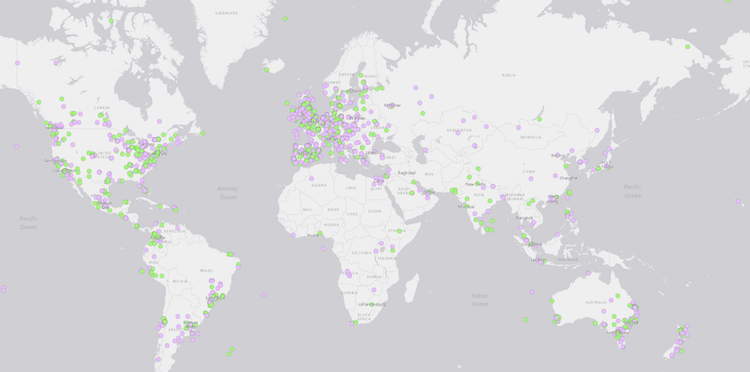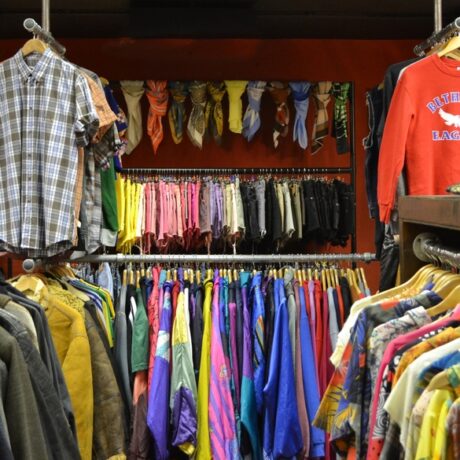Now We Have @Fash_Rev Eyes: Behind the Scenes of Fashion Revolution’s Who Made My Clothes? course: Entry 3
We have trawled through policy documents, fired emails at brands asking ‘who made my clothes?’ and received a mixture of non-replies and straight up silence. We have investigated our clothes. We have become effective detectives, if we do say so ourselves, and with the human stories we have found we have crafted stories linking our lives and theirs. This is it – week three – ready for action!
The final part of the course asks learners to take a pledge. Fret not, this is not a sign-your-life-away, only-wear-hemp-socks, burn-that-Topshop-jumpsuit-that-you-love kind of pledge. To overcome the issues addressed in the course, there is a need for both large and small, individual and collective actions. It is easy to get bogged down thinking about the vicious cycle of fast-fashion, including lack of transparency, companies’ race to the bottom for profits, and our throwaway society in general. When we buy something we are often so alienated from the production, it is difficult to comprehend that your favourite top was actually made by someone’s hands. We’re just two gals with modest budgets, we’re not instafamous and are not willing (able) to never shop again. Where do we begin in tackling this stuff?!
Well the course’s message boards have discussed exactly that: ‘to boycott or not to boycott… that is the question’, should we use our money as leverage – or is this just false democracy? If we act will it matter anyway if the brands don’t comply? Is the onus only on the consumer? What about workers’ unions? This course, and the tools and work of Fashion Revolution, offer ways to start looking at these questions.
Its time to put what we’ve learned into action. To make a difference in as big or as small a way as we can. It’s pledge time.
If you’re stuck for one we’ll tell you a few of our favourites. Number one, only wear banana leaves for the rest of your life… wait, no… that’s wrong, no no, sorry, let’s start again. Realistic pledges only. 1. (lets start of easy) Swap clothes with friends and family – you might be bored of your wardrobe but your sibling sure won’t be. 2. Buy more second hand – there is joy in the chase. 3. If you can, invest in more ethical brands. 4. Check out Fashion Revolution’s own Fashion Transparency Index when you’re feeling high street. 5. Change the conversation: “wow… where is your top from?” “It’s made Turkey, I don’t know by whom.” – this may elicit strange looks or stir up some interesting chat. Who knows but it will be fun to find out. 6. LOVE THE CLOTHES YOU ALREADY HAVE – reuse, repair and upcycle; follow those washing instructions and make that angora jumper last.
For us, the course has been eye-opening, frustrating, thought-provoking, and quite humbling – both in terms of what we have discovered and the participation of learners on a global scale (seriously check out that map) . Even though the course has finished us, its learners are still learning. It’s open for free until the end of next week, unless you pay to upgrade. Even if you think you don’t have enough time, its worth a browse as it brings together in one place excellent resources and obviously fabulous guidance from the esteemed and really quite cute MOOC team.
We won’t be forgetting about what we have learned anytime soon. Scrolling through ASOS or Wavey Garms really isn’t as fun as it used to be. When we started the course, we had to consciously put on our @fash_rev spectacles. Now we find we have @fash_rev eyes. Now when shopping for clothes the requirements have changed from ‘it fits and doesn’t make me look like a Yorkshire pudding’ to ‘do I really love this and will I wear it all the time’, and we don’t think that’s a bad thing.
To finish off we’d like to say a thank you to Ian Cook, Verity Jones, Kellie Cox, and the rest of the MOOC team in Exeter who made this possible. The amazing panellists who made our Q&A videos insightful and vibrant. Fashion Revolution who provided the resources and impetus to create this global conversation. The learners for getting involved and asking the difficult questions that need to be asked – (they’ve even created a Facebook group to keep the conversation going – we are very proud mentors). And finally those who made our clothes.
Lily Petherick and Caroline Weston Goodman







